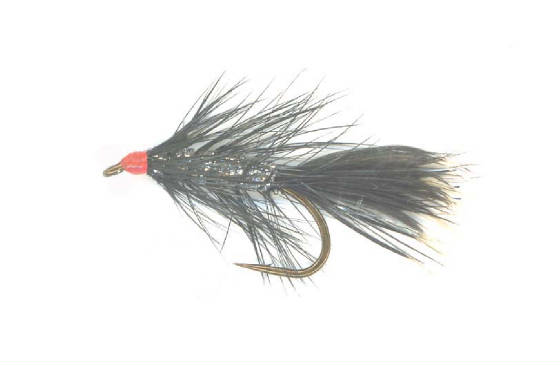Welcome to River Magic
Stillwater Slim on the Line ... February 8, 2011
|
 Fish Farms
Pamela Parker, executive director of The Atlantic Canada Fish Farmers Association, responded Feb. 2 in the Chronicle-Herald to Silver Donald Cameron’s Jan. 30 Sunday Herald column titled “Keep salmon farms out of the ocean”. Her passionate response, an unusual display of Nova Scotia patriotism, stopped just short of accusing Mr. Cameron of treason. She insists that Nova Scotia fish farms are better managed than those in other jurisdictions, explaining how the industry is not only sustainable in Nova Scotia, but that it does not employ growth hormones and minimizes pollution.
However, she fails to address the principal concern expressed by Mr. Cameron’s column (hence his column’s title) that wild salmon populations can co-exist with fish farms ONLY if the farms move from sea-cages to above-ground tanks, completely isolated from wild fish. This minimizes the risk of wild juvenile salmon being killed by sea lice infestations and the risk that fish farm escapees (like this winter’s exodus from an NB fish farm) will interbreed with wild stocks resulting in genetic weakening of wild populations. Mr. Cameron’s concern is well-founded, as evidenced by wild Atlantic salmon declines in fish farming regions (such as the Bay of Fundy) on both sides of the Atlantic. As he notes, even wild Pacific salmon populations in some rivers have been devastated by sea-lice infestations generated by Atlantic salmon farms in BC. Ms. Parker provides 3 reference websites for further information: www.aquaculturegrowsns.com, www.allaboutsalmon.ca and www.atlanticfishfarmers.com. The first, in an article by Ruth Salmon, executive director, Canadian Aquaculture Industry Alliance, casually dismisses the issue, stating “Canada’s healthy wild fish stocks are great news. It’s time to put the tired salmon farming debate behind us. Let’s work together to protect our oceans from the real environmental threats.” The second, a website of the North Atlantic Aquaculture Council, has the following section, Committed to the salmon conservation effort: “We are proud partners in the wild salmon conservation effort, and are committed to helping understand and address the primary threats to wild salmon populations.” I could find nothing in her third reference on the subject, but it does reference a paper on interaction between fish farms and the lobster fishery.
This serious issue deserves a lot more from aquaculture than more industry spin. At least one Nova Scotia fish farmer knows this. A November 19 Chronicle-Herald article Hants County firm markets European sea bass from land based operation states: “A Hants County aquaculture operation is set to market North America’s first sustainably grown European sea bass, ”We’re giving the fish an optimal environment,” Jeremy Lee, president of Sustainable Fish Farming Canada Ltd. in Centre Burlington, said Thursday in an interview. “We re-create the natural environment by the controls of our system.”
“The land-based fish farm known as Sustainable Blue is on 22 hectares of woodland near Windsor. It uses proprietary technology developed in England by Lee, a native of the United Kingdom, to clean, recycle and regulate 500 metric tonnes of water per hour to strict tolerances. ”We go out of our way to farm sustainably.” Lee said all the operation’s incoming water is sterilized and all the organic waste from the fish is collected and held on land. “We don’t discharge effluent.” The organic material will be used as fertilizer.”
“The contained aquaculture operation has no impact on the marine environment, which has become something of a regional issue with the outbreak of sea lice in salmon farmed in cages off the New Brunswick coast. Lee wouldn’t comment on the sea lice problem specifically, but he said his firm’s technology keeps its fish disease-free without using chemicals or drugs. “We don’t have sea lice or any other diseases in our farms.”
The safeguards described above should set the standard for any new Nova Scotia fish farm developments and for new government regulations. Then, Nova Scotia communities can have the best of both worlds: a thriving sportfishing industry based upon wild Atlantic salmon, wild sea trout and striped bass, AND responsible, sustainable aquaculture.
Our fly of the week is by Stillwater’s Frank Walford, a fine fly tyer, fine neighbor, and fine local angler. If you ask Frank how he is, he’ll respond, “Fine, thanks”, so we know it’s all true. The fly works well for him for both trout and salmon. Frank is also a fine gentleman for sharing his secret with us!
Humungus Kamasan
Hook – Mustad 3399A bronze TDE wet fly hook, size 4 - 12 Thread – Red Tail – Black marabou or soft schlappen, length of hookshank, over strands of silver Flashabou or Flatbraid Body Hackle - Black hackle tied in by tip & folded backward Body – Two layers of Silver FlatBraid, Krystal Flash chenille, or Diamond Braid, giving a full body Hackle - About 4 wraps of the black body hackle followed by 2 more turns just behind the head of the fly Head - Red thread finished with 2 coats of glossy head cement.
Please send comments and suggestions to slim@rivermagic.ca
Please stay on the line … |